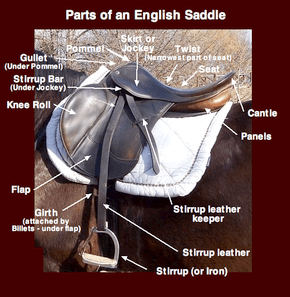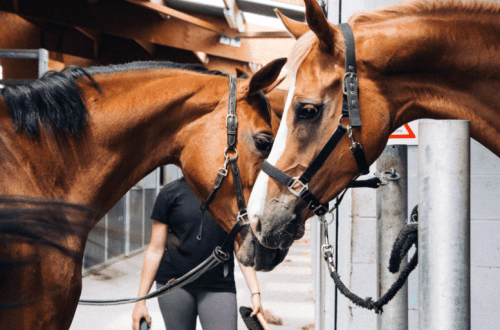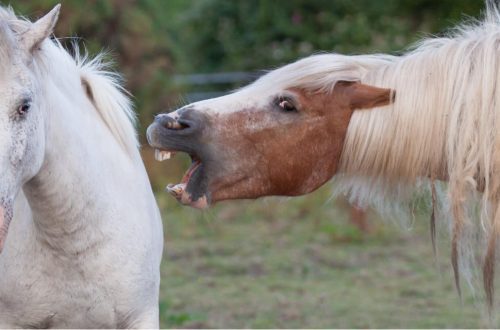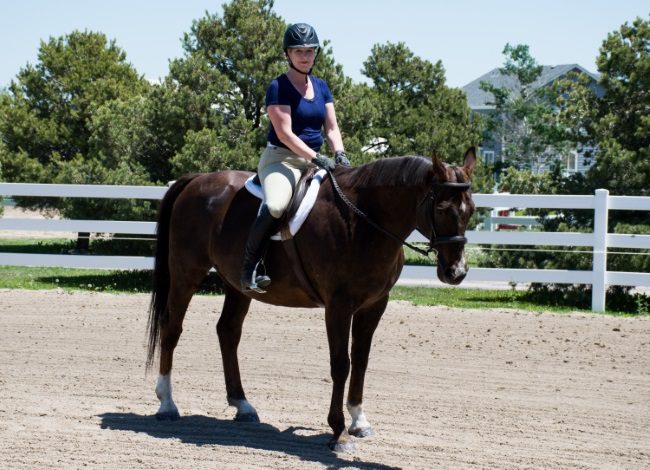
Riding training for adult riders
Riding training for adult riders
Consultant Physician and Trainer Julie Goodnight describes 10 common riding problems and offers practical solutions to fix them.
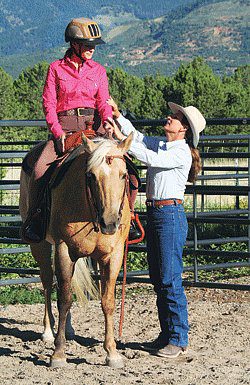
Horseback riding is often used to develop correct posture in children. Concentration on landing helps lay the foundation for their future riding skills.
For those who come into riding as adults, or for riders who haven’t practiced riding for decades, it’s quite possible to forget the importance of keeping your body upright and taking care of a good seat.
What are the main problems that riders have?
1. Slouched shoulders
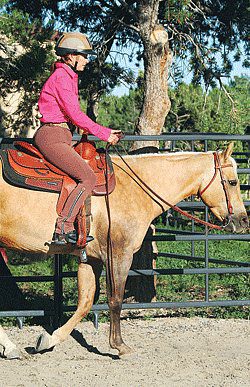
A rider who leans their shoulders forward usually leans their body forward as well. Strengthen your body muscles to eliminate this problem.
Problem: your shoulders go forward, sometimes causing you to lean forward and your body. “Riders often slouch,” says Julie. “But they usually have problems with posture and on the ground.”
The problem is not just in the shoulders. Its roots are in a stooped back and a clamped chest. Unfortunately, its presence indicates weak muscles of the abdomen, back and buttocks. The result of this landing is stoop and problems with balance.
Correction: simply pulling the shoulders back will not solve the problem. Good posture comes from the strength of the muscles of the back and abdomen. “Practice on the ground,” Julie recommends. – Pay special attention to your posture when sitting at a computer. Pthink about exercises for the abdomen, train regularly with a fitball.
2. Tilt of the pelvis
Problem: your pelvis moves forward or backward, usually depending on the structure of your body and how flexible it is. Tilt the pelvis forward tilts the back, and tilt back compresses the chest. No matter how hard you strain your back, you lose contact with the horse. You also have less ability to absorb shocks from the horse’s movement.
Correction: The goal is to keep the pelvis in a neutral position with equal pressure on the pubic and ischial bones. “Imagine your pelvis is a vessel filled with fluid,” Julie suggests. Tilt your pelvis forward and the liquid will flow from the front. Tilt it back and liquid will pour from behind. Your goal is to prevent fluid transfusion.
Sit on a chair with each leg under your sitting bone. From this position, move the weight. You will feel the power of such a landing.
If you tend to tilt your pelvis forward, use the imaginary tail method. Sit up straight and imagine the tail reaching across your legs and straightening your spine.
Riders who tend to tilt their pelvis backwards may be advised to roll their pelvis forward and visualize a rope that lifts you up at the top of your head.”
3. Forward bends
Problem: in the saddle you lean forward, especially when you’re nervous. In fact, you are aiming for the fetal position. Your seat moves away from the saddle and your legs go back, making your saddle position less secure. The horse perceives such a light landing as a signal to accelerate the movement, exacerbating the situation.
Correction: Forward bending may seem natural to you, so you have to reprogram your body and brain.
Start by sitting more firmly in the saddle and aligning your spine. You have to keep your hips over your heels and your shoulders over your hips. When you feel yourself leaning forward, take a deep breath and feel your stomach and lungs fill with air. This will naturally lift your shoulders, pull them back and help you relax – both mentally and physically.
Ask someone to film your workout. Watch the tape, paying special attention to how far you lean forward, and then make another recording. Sooner or later, when it seems to you that you are leaning back, it turns out that now you really are sitting upright.
4. Stirrup pressure
Problem: you relax in the saddle, leaning back on the pommel of the saddle, stretching your legs forward and resting on the stirrups. This is a great position for a sliding stop, but it leaves you behind the horse’s movement as he moves forward. It also leaves you behind her center of gravity, over the most vulnerable part of her spine, which can lead to back problems down the road.
Correction: Straighten your body. Place your heels in line with your hips, not in front of your body. If this does not work, try for some time onride without stirrups. This will naturally force your body into position because you will have to rely on your seat and balance rather than the stirrups to keep you in the middle of the horse.
5. Hand position
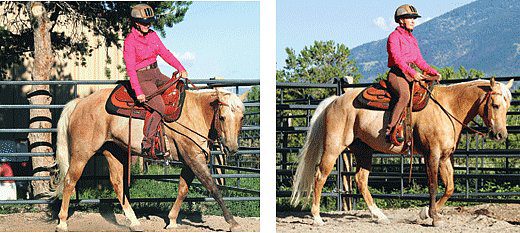
Left: Widely spaced arms prevent proper interaction with the horse.
Right: The solution calls for using the biceps to hold the arms and create a strong line from the elbow to the iron. This results in direct transmission of commands from the hand to the mouth.
Problem: hand position. Errors related to the position of the hands are common to many riders. Someone raises his hands with a rein almost under his chin, someone puts them on the horse’s neck or holds them in front of the front pommel.
Any incorrect position of your hands can lead to communication problems between you and your horse. If you hold the reins short enough, you put too much pressure on his mouth, if you hold the reins too loose, you run the risk of tugging on the horse’s mouth when you suddenly pull on them.
Correction: The biceps are the strongest muscles in your arms. They help you keep your hands in a certain position and give commands to the horse. Use your biceps to hold your arms and create a straight line from the elbow to the horse’s mouth, but don’t squeeze or tense your arms. You want long, relaxed shoulders and soft arms that are in front of your chest.
A straight line from the elbow to the iron should be visible not only when looking at your fit from the side. If you look at the forearms from above, you should also see a straight line. Proper posture will help create a straight line for the interaction between the horse’s hand and mouth, effectively making the rein an extension of the hands. You should imagine and, perhaps, feel that your forearms have lengthened, and you seem to be reaching out to the iron with your hands, holding it.
While you are thinking about the position of the reins, think about how you are holding them. The tension in your palms should hold your fingers together so that they are clenched yet still gently holding the reins. The pressure should be the same as when you hold a fountain pen.
6. Pressure on the pommel
Problem: This landing defect is often associated with pressure on the stirrups (item 4), although other causes lead to it. For example, pressure on the pommel can be provoked by a too small saddle, due to which your seat is pressed against the back.
An ill-fitting saddle and its incorrect position on the horse’s back can make you feel like you’re sitting in the back because gravity is pushing you against the pommel.
Correction: to understand exactly how you need to position yourself in the saddle, make sure that there is a distance of a fist between the pommel and the coccyx. If you fail, then the choice is small – either change the size of the saddle, or … lose weight.
Many riders tend to put the saddle too high on the horse’s shoulders. Move the saddle back a little so that the palm of your hand fits between the horse’s elbow and the girth. If the saddle is too far back on the horse’s back, adjust its position.
If this does not help, pay attention to the width of the saddle. A tree that is too narrow often seems to be pulled up at the front, causing it to compress the horse’s shoulders. In this case, you can use a fur coat or gel – they will raise the saddle over your back.
It’s important to understand that a badly fitted saddle can cause health problems for your horse, so even if you just feel like the saddle doesn’t sit right, check with your trainer or, better yet, a harness consultant or saddler.
7. The habit of looking down
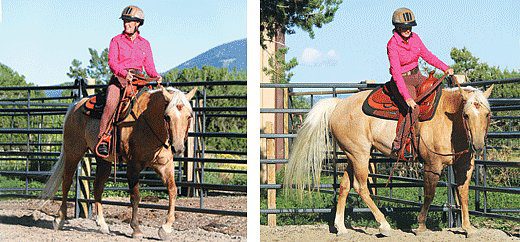
Left: Look where you’re going. This will help avoid collisions and give your horse a target to aim for.
Right: Riding a horse is not driving a car, so no need to lean into the turn.
Problem: while on horseback, you begin to look at the head of the horse, instead of looking where you are going. Where your eyes look, your head leans there, forcing you to lean after it. upper body. This landing error is especially common among professional treadmills and trainers – “We all look down too often,” Julie says.
The habit of looking down leads not only to problems with the landing, it can cause trouble in the arena, where someone else is training.. Research shows that your horse can’t see what’s in front of him when his head is down, so if your gaze is also down, then does not control the road none of you. You might miss a dog running through a playpen or a plastic bag caught in the wind, things that can startle your horse and lead to dangerous situations.
Correction: Instead of focusing on the front of the horse and “setting his head in a certain position”, try to concentrate on how he feels. At the same time, don’t look up, but look ahead. When you look where you are going, you turn your head there. When you turn your head, your weight shifts, giving important signals to the horse.
Jumping people are best at using their eyes because they are always looking ahead to the next obstacle. You could learn this useful skill. Find points in the arena that you can focus on. For example, when you make a turn in the corner of the arena, turn your eyes and focus on a particular pole or tree, something in front of you.
When you look ahead with your head up, you can see everyone around you, whether you are riding or leading a horse.
8. Lean in corners
Problem: When your horse turns, you lean over the arc and lower your shoulders. It’s like you’re driving a car. The difference is that your horse weighs 500 kilograms while your car weighs at least a ton. Since you are sitting on top of your back, the movement of your body causes the horse to lean over, act like a motorcycle that turns and accelerates in order to regain balance.
Correction: twist your spine and lift your shoulders as you turn. To avoid diving into turns, pull your shoulders back, raise your inside guide-turn rein, bend your wrist and use your eyes to look in the direction of the turn. Imagine that a horse is a dance partner. Use body and shoulder movements to guide her through the element. The result should be a balanced and smooth turn.
9. Raised heel
Problem: You are on your toes and your heels are up instead of dropping freely towards the ground. When you stand on your toes, you lean forward and lose your balance. Tight calf muscles exacerbate the problem by making it difficult to drop the heel down.
Correction: If you have a problem with tight heel tendons, pay attention to the daily flexibility exercise. Just touching your fingertips works wonders. Just bend at the waist, relax your knees, bend over a little and gently reach your toes.
While in the saddle, remember to lift your toe and not just pull your heel down. Practice riding in a two-point position – stand in the stirrups with your knees bent and your hands on the horse’s neck for balance. Let gravity pull your heels to the ground and feel the back of your leg stretch as you improve your balance.
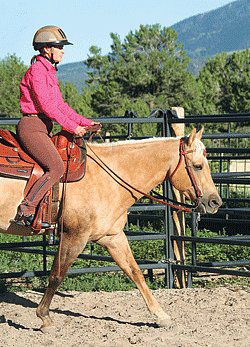
Short stirrups throw you out of the saddle. To create a solid foundation, adjust the stirrups to achieve the same angle between the joints of the upper and lower legs.
Problem: your stirrups are too long, which means that you stretch your feet, stand on your toes and constantly lose your balance. If your stirrups are too short, they pull your legs right under your torso and throw you out of the saddle.
CorrectionA: Proper body alignment—shoulders, hips, and knees—starts with a solid foundation. To achieve this good foundation, you will need to fit the stirrups.
Make sure that the angles of the upper and lower legs are the same. Try to match the angle of hip flexion to the shoulders of the horse.
Of course, Western riders ride with slightly longer stirrups. Competitors prefer short stirrups, which allows them to rise above the saddle while jumping, while dressage enthusiasts use longer stirrups, which gives them optimal contact between the horse’s sides and their legs. However, the difference between riders who specialize in different equestrian disciplines is not so great. It doesn’t matter what type of saddle you sit on – you need to feel comfortable, safe and perform efficiently.
Rule of thumb: make sure your stirrups have at least the same length as your arms from armpit to fingertips. When you are in the saddle, put your feet down freely and see where they touch the stirrups. This place should be located directly in the region of the talus.
Improve your fit!
- Find an assistant to film your workouts. Looking at yourself from the outside can help you see positive and negative changes in your learning. As you review the recordings, create a plan for how to improve your fit.
- Pick a spot in the arena where you can go through your list. Use it every time to check and correct fit imperfections.
- Take regular riding lessons from a professional trainer. Work with someone who will draw your attention to your shortcomings, whatever they may be – hands, heels, etc.
- It will be great if there are mirrors in the arena where you work out – so you can observe yourself and correct your shortcomings.
- Challenge yourself by practicing riding without stirrups. Start with a walk and gradually move on to work in other gaits. Keep your safety in mind – don’t push yourself too hard if you’re not ready yet.
- Do more cord workouts. This way you can focus on yourself without getting distracted by the horse. .
Michelle Anderson; translated by Nara Hakobyan (Dialogue with a horse).



